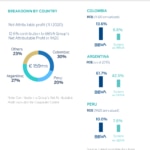BBVA revises upwards its 2020 guidance thanks to the improvement in Mexico’s outlook
In a presentation for investors organized by Bank of America (BoFA) and in which BBVA CEO took part this morning, BBVA raised the Group’s guidance for 2020, thanks mostly to an improvement in its business activity in Mexico. At Group level, recurring revenues in constant euros will grow in 2H20 compared to the previous half of the year thanks to a recovery in new retail loan production and focus on price management. Furthermore, BBVA expects to beat its expectations regarding cost reductions for 2020, and improves its cost of risk expectations for 2020, to a range between 1.5 and 1.6 percent in cumulative terms for the year, thanks to a better performance in Mexico. The Group plans to close 2020 with a fully-loaded CET1 capital ratio above the target range. BBVA’s intention is to resume dividend payments once the existing supervisory recommendation is eliminated and COVID-19 uncertainties dissipate.

During his speech to investors, Onur Genç explained that BBVA faces the current challenges from a position of strength, which materializes in four aspects: A resilient operating income, a sound capital position and a proven ability to generate organic capital, a comfortable liquidity position and the digital edge as a competitive advantage.
His presentation showed an improvement in guidance for the Group for 2020, starting with an increase of recurring revenues in constant euros in the second half of the year, compared to the previous six months, thanks to a recovery in new production of retail loans and price management. The Group also expects to beat expectations in cost containment efforts..
Genç also announced an improvement in the cost of risk guidance for 2020 to a range of between 150 and 160 basis points, vs a previous range of 150-180 basis points. This upward revision is the result of a better-than-expected evolution of loan deferrals in Mexico.
As for the capital ratio, BBVA expects to end the year above the capital target (between 225 bps and 275 bps above its 8.59 percent requirement), on the back of its ability to generate capital, some pending positive regulatory reliefs and corporate operations still pending to be approved, such as the sale of BBVA Paraguay and the non-life insurance business joint venture with Allianz in Spain.
Shareholders remuneration
BBVA’s intention is to resume dividend payments once the existing supervisory recommendation is eliminated and COVID-19 uncertainties dissipate. It will be assessing the best ways to remunerate shareholders including not only dividends but also possible share buybacks.
Mexico
BBVA foresees an upward trend for recurring revenues in Mexico, i.e. net interest income and fees and commissions with an expected improvement in constant euros in the 2H20 compared to the first half. This improvement is due to the fact that many of the interest deferrals on credit cards and SME loans have expired, and in 3Q20 the bank started to accrue interests on these transactions.
Furthermore, retail loans, which hit bottom in April, are rebounding. Credit cards and mortgages have reached pre-COVID levels, and consumer lending continues an upward trend. The 2020 guidance for net interest income for the full year is flat or slightly lower than 2019 in constant euros.
As for payment deferrals, with data as of September 14th, virtually all deferrals for retail customers have expired, which account for two thirds of the total. These deferrals are showing better payment trends than expected, since about 90 percent are being paid, which prompts the bank to improve its expectations for cost of risk for the second half of the year: while the bank indicated in the Q2 earnings presentation that it expected the second half to be similar to the first, BBVA now expects a significant improvement of the cost of risk in 2H20 in Mexico, with 2020 CoR now expected to be clearly below the 495 basis points reported in 1H20 results.
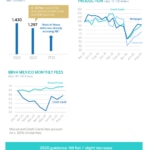
Spain
BBVA's business in Spain is showing strength, despite the challenging environment, with net interest income and cost containment acting as the main drivers for the results and a better evolution than its comparable peer group. In the first half of the year, net interest income grew 1.7 percent compared to the same period the year before, thanks mainly to price management; this compares to a 5.9 percent decrease for the bank’s peer group. It is expected that for the whole of the year, this line item will see a slight growth. With respect to costs, a 5 percent — or even greater — year-on-year decrease is predicted for 2020. Regarding the cost of risk, the 2020 guidance places it significantly below the first half total, thanks to frontloading provisions in the first part of the year. BBVA holds the highest coverage ratio among comparable peers, 66 percent, 12 percentage points above the average of its peers.
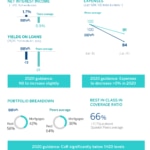
United States
Despite lower interest rates and a challenging environment, BBVA USA’s operating performance evolves better than expected. For the full year, the outlook points to a low, single digit fall in the net interest income, despite the Fed's aggressive lowering of interest rates. The bank also anticipates that 2020 expenses will see a 2.5 decrease in line with 1H20. The cost of risk in the second half is expected to be significantly lower than the first half, thanks to strong frontloading provisions in 1H20.
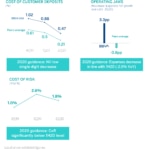
Turkey
Garanti BBVA has shown its earnings resilience in a complex environment, with the highest pre-provision profit as a percentage of its interest-earning assets in the Turkish banking sector. The franchise also has a sound balance sheet with a comfortable foreign currency (FC) liquidity buffer of $9.3 billion, which allows Garanti to face the current crisis from a comfortable position. The bank has also narrowed its loan portfolio in FC by 38 percent since 2015. The Group expects the cost of risk to finish the year significantly below the accumulated level of 1H20, thanks to frontloading provisions in the first half of the year and its high coverage ratio, at 84 percent, almost 16 percentage points above its comparable peers.
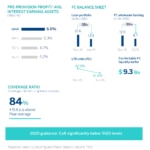
South America
BBVA maintains its leadership in profitability in South America amid a complex environment in the region. In Colombia it is worth highlighting the excellent deposit cost management in the first half of the year. In Argentina, which has benefitted from the public debt restructuring, the key aspects of the P&L account point to price management and the release of provisions for the securities portfolios. In Peru, the country has been very impacted economically. The bank has focused on cost control and the management of quality assets in its balance sheet.
